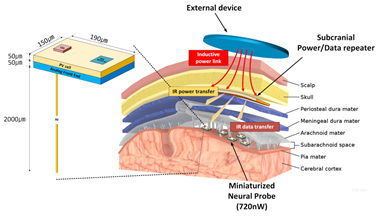An Ultra-Low-Power Neuromorphic Spiking Neuron Design
From iis-projects
Contents
Description
Integrate-and-Fire (IAF) neurons are widely available in neuromorphic spike-processing applications. Analog LIF neurons are considered a breakthrough to realize fully analog, fully asynchronous spiking neural network implementation for ultra-low-power AI-embedded systems. In this project, you will seek to realize an analog ultra-low-power (thus low energy/spike) LIF neuron, having a very low-frequency spiking rate (e.g., <100Hz). The prerequisite course is Analog integrated circuits. If the design result is promising, the study will be summarized and submitted to IEEE conferences such as ISCAS/BioCAS.
Status: To be Available
- Looking for master or semester thesis students
- Supervisor: Kwantae Kim <kimkwa@ethz.ch>
Prerequisites
- Analog integrated circuits
Character
- 20% Literature review
- 20% Theory
- 60% Circuit Design
Professor
Prof. Taekwang Jang <tjang@ethz.ch>
Reference
[1] A. Rubino, C. Livanelioglu, N. Qiao, M. Payvand and G. Indiveri, "Ultra-Low-Power FDSOI Neural Circuits for Extreme-Edge Neuromorphic Intelligence," in IEEE Transactions on Circuits and Systems I: Regular Papers, vol. 68, no. 1, pp. 45-56, Jan. 2021, doi: 10.1109/TCSI.2020.3035575.
[2] S. Vuppunuthala and V. S. Pasupureddi, "3.6-pJ/Spike, 30-Hz Silicon Neuron Circuit in 0.5-V, 65 nm CMOS for Spiking Neural Networks," in IEEE Transactions on Circuits and Systems II: Express Briefs, doi: 10.1109/TCSII.2023.3324584. ↑ top
